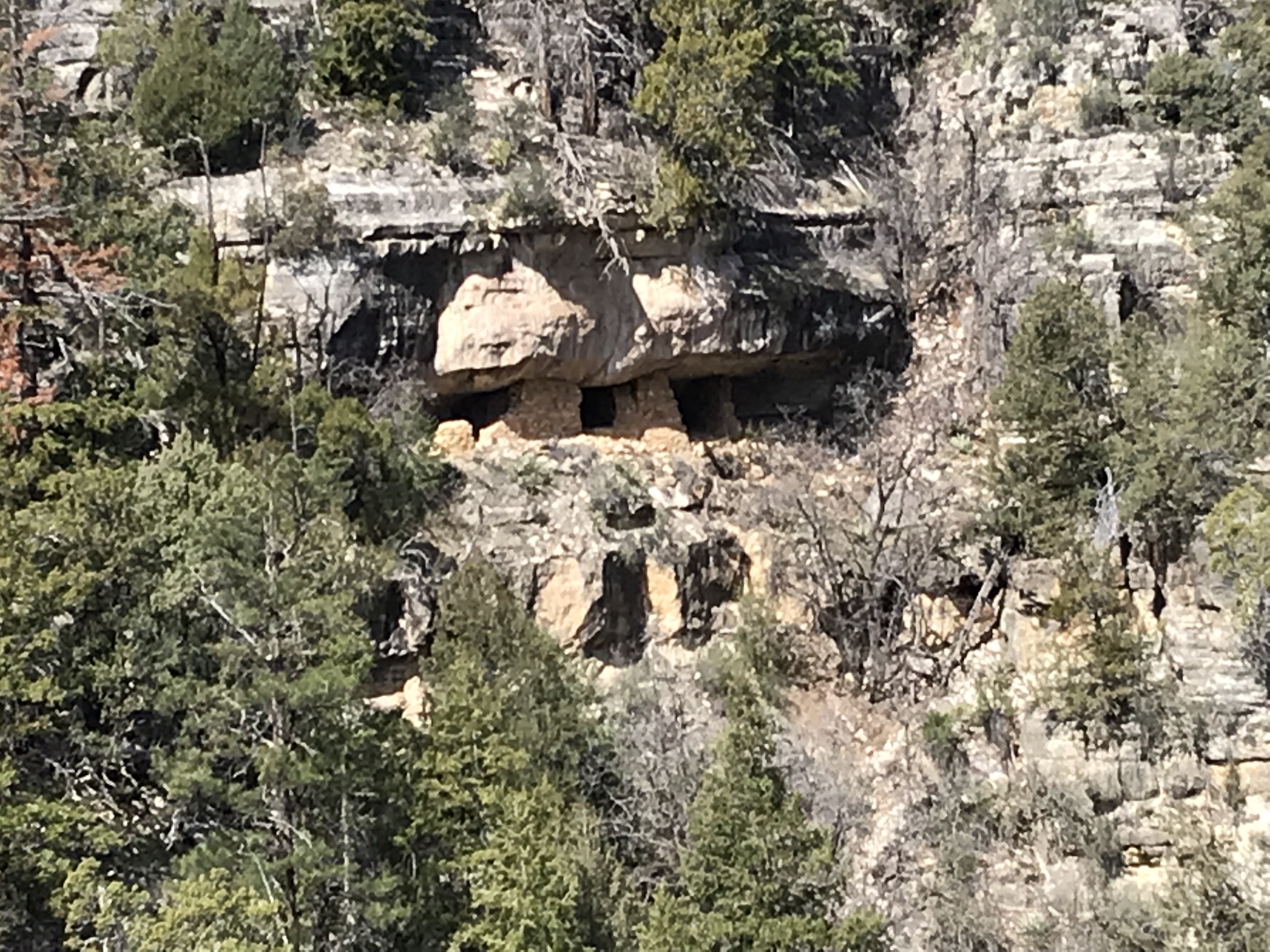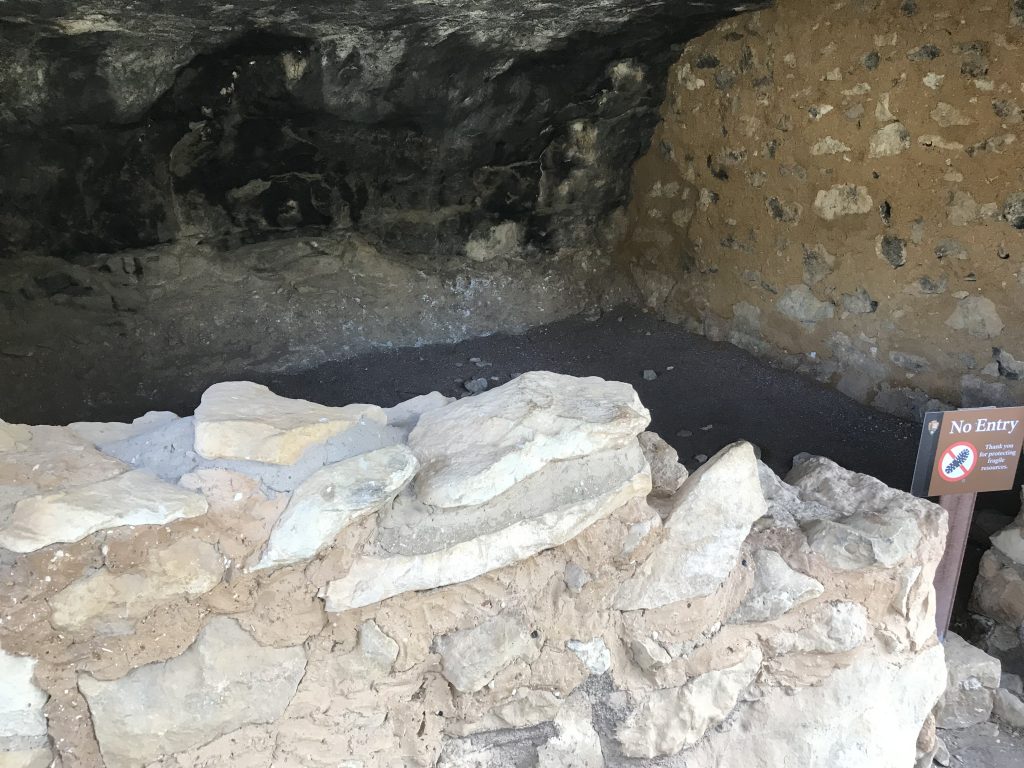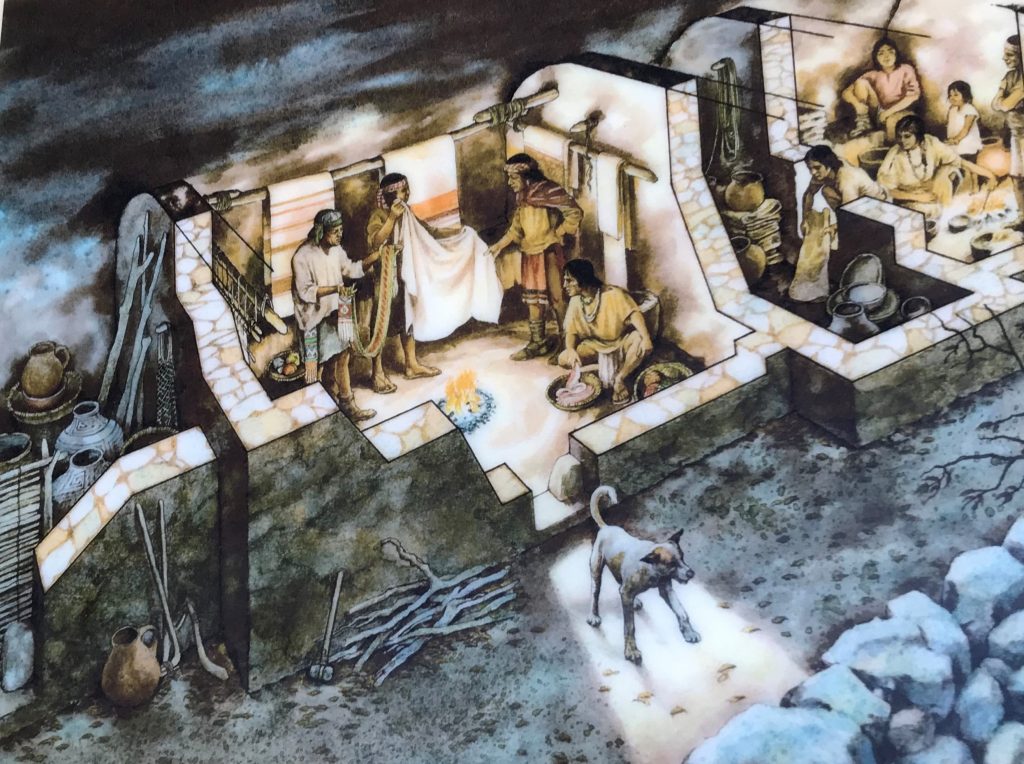Just about 15 minutes outside of Flagstaff, lies Walnut Canyon. Established as a national monument by Woodrow Wilson in 1915, the park preserves ancient cliff dwellings from the Sinagua Indians.
The park is small; encompassing 3,600 acres and averaging 100,000 annual visitors. And because it only offers two short trails (less than one mile each), exploring can be done in an hour or two.
The Visitor Center
The rangers at the visitor center offer a wealth of information about the native inhabitants and culture. From information pieced together over the years, the Sinagua settled here around 600 AD and remained until around 1250. Until 1100, they lived along the canyon rim while farming the land and producing crops such as corn and beans. For the next 150 years, the natives built dwellings among the caves of the limestone cliffs.
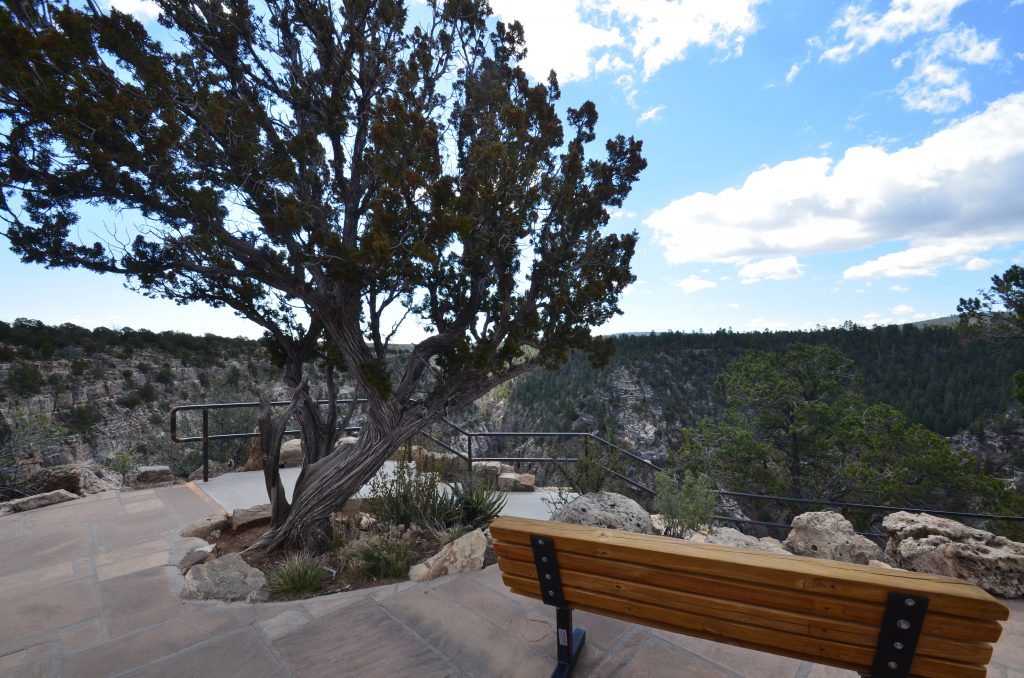
At the back of the visitor center, take the stairs to the outside overlook. From here, the Rim Trail and Island Trail start.
Island Trail
The best way to see the canyon is to take one of the two trails. We opted for the 1-mile Island Trail which descends 185 feet and has over 200 stairs.

The descent begins almost immediately from the visitor center. However, the paved path soon flattens out and winds among the pine trees giving us views below the rim. Detailed placards offer information about the cliff inhabitants.
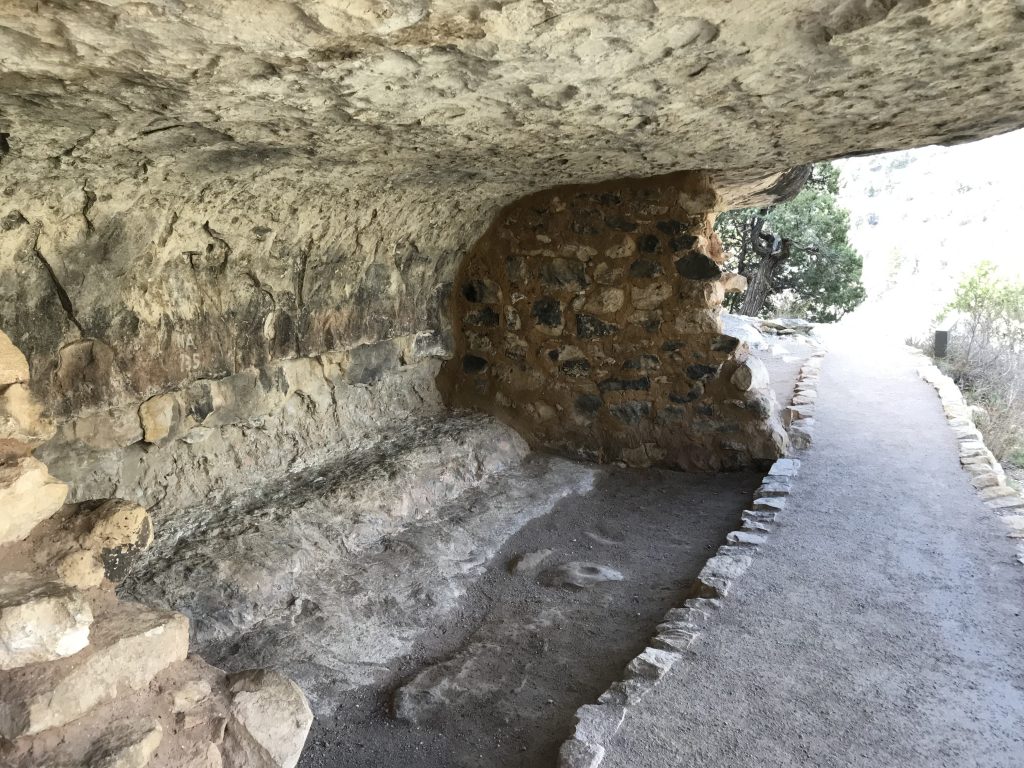
Soon we came to one of the shelters and it was evident why the canyon became a popular dwelling place. Since nature offered most of the shelter, the natives only had to add limestone and mortar to the sides and front to complete their house.
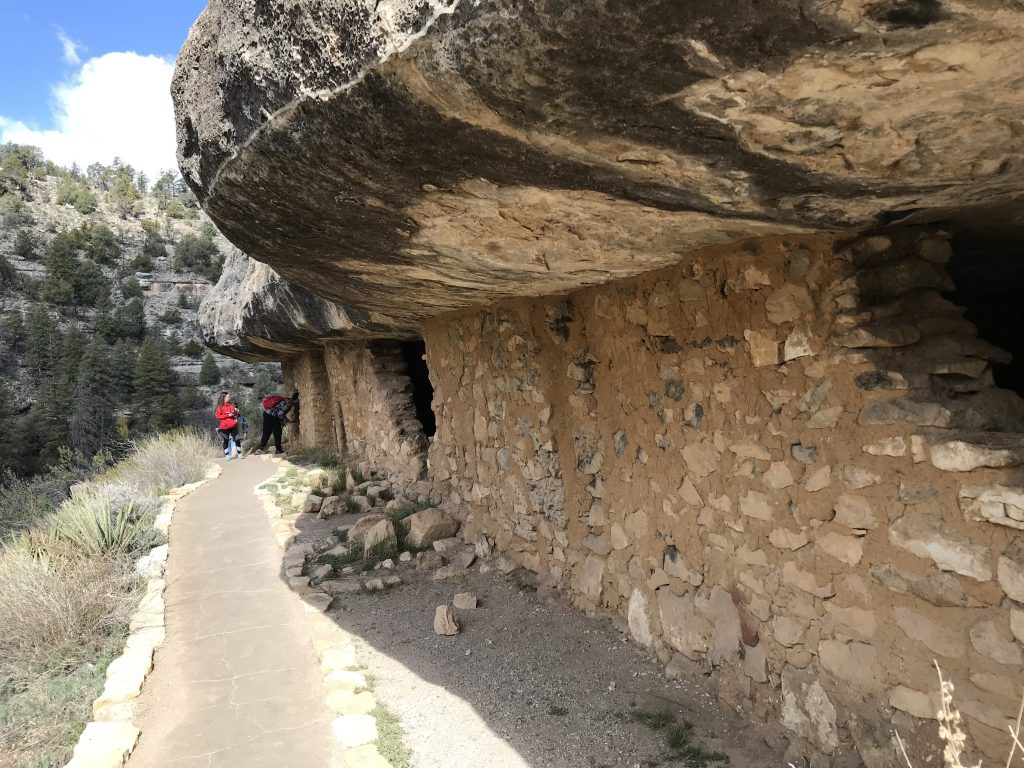
We could peek inside and with the helpful plaques could imagine life over 800 years ago. Rooms were used for a variety of activities: food storage, tool making, eating and sleeping. The nearest source of water was from the creek that runs on the canyon floor. Using large vessels, the Sinagua would carry water up almost 400 feet to the storage rooms in their homes.
Looking across the canyon, we could see more dwellings in the distance. To provide light and heat, many were built facing south and east.
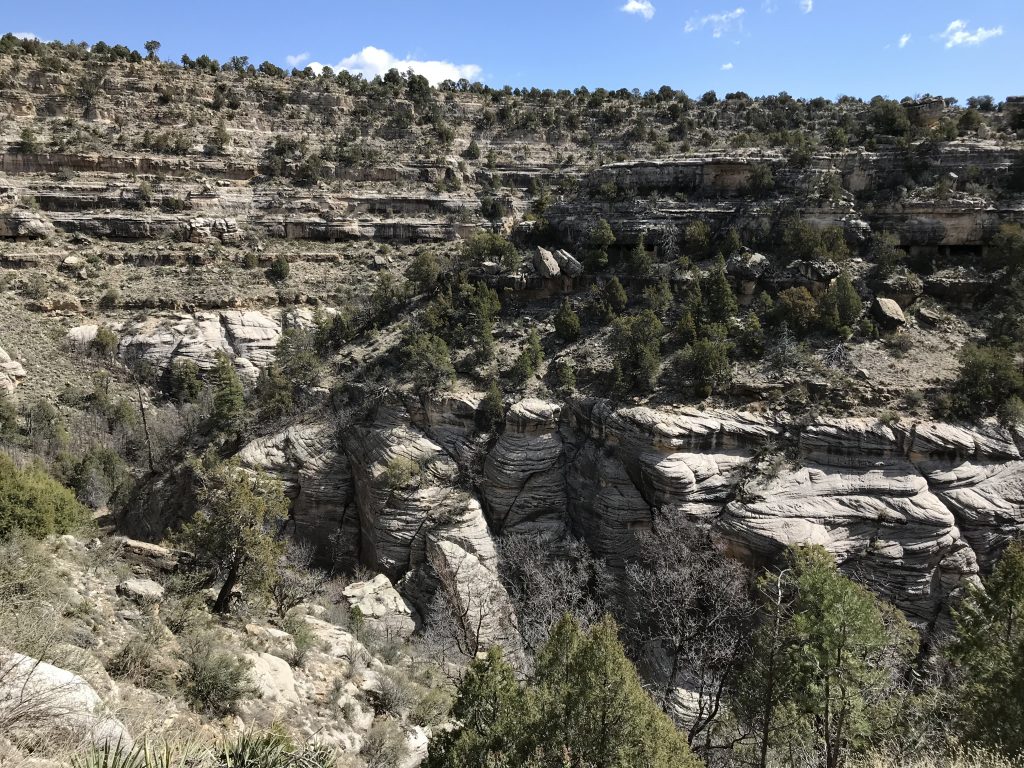
Now it was time to continue the loop back to the visitor center. The ascent wasn’t as hard as it looked and soon we were back where we started – but now armed with an appreciation for native cultures.

We asked the park ranger why the Sinagua Indians left the area around 1250. Unfortunately, nobody really knows and the tribe became extinct a few centuries later.
For more information, click here.
